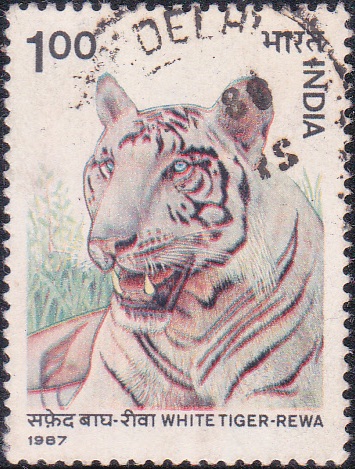
Indian Wild Life 1987
Complete Set of 2 nos of commemorative postage stamps on the Wildlife : Snow Leopard and White Tiger :
Issued on Nov 29, 1987
Issued for : “Kshamaya dharitri“, exhorts a line from a Sanskrit Shloka, demanding the Man learn the patience and the forgiveness of the Earth. The forbearance of the earth is nowhere better seen than in the support she gives to wild life threatened by man’s irreverent disregard for the gifts of nature. His wanton and thoughtless destruction of wild life habitat is endangering many spices. The Department of Posts feels privileged to draw the attention of the masses to the urgent need for conservation. By 1987 the Department issued a set of two stamps on one rare and one endangered member of the cat family both of whom are predators at the apex of their respective ecological chains.
Description of Designs : The two stamps in the set on wild life depicting the White Tiger are designed by India Security Press, Nashik Road. The first day cover shows the white tiger, photographed by Thakur Dalip Singh. The cancellation is designed by Smt. Alka Sharma.
Type : Stamps, Postal Used
Colour : Multi colour
Denomination : 100, 500 Paise
Overall size : 3.91 x 2.90 cms.
Printing size : 3.55 x 2.54 cms.
Perforation : 13 x 13
Paper : Imported un W/M adh. Gr. Coated stamp paper
Number Printed : 15,00,000
Number per issue sheet : 35
Printing Process : Photogravure
Printed : India Security Press
About :
- The SNOW LEOPARD, related to the common panther (Felis Pardus) is the predator supreme of the high mountains. Endowed with an exceptionally rich for coat to withstand the extreme cold of the uplands it inhabits, it has a remarkably bushy tail to prevent heat-loss and large pads to help it traverse snow. Its colour varies from cream to greyish white with large rosettes giving it a mottled appearance that assists its camouflage.
- Though it is found throughout the Himalayan range above tree-line where sufficient prey is available, its main population in India is in the trans-Himalayan region of Ladakh, Lahaul and Spiti where bharal or blue sheep and ibex are found. It also preys upon Himalayan tahr, musk deer, marmots and hares and occasionally upon livestock.
- The snow leopard is at the apex of the food chain in the mountains and to safeguard it, protection has to be accorded to its prey species and the habitat of both the prey and the predator. With this objective in view, Government of India has initiated a Snow Leopard Conservation Scheme under which suitable habitats of the snow leopard and its prey are to be protected and restored.
- Though the tiger (Felis Tigris) had a distribution from the Ussuri forests of the USSR to Indonesia and from Caucasus to the Chinese coast, there has been little evidence of the existence of WHITE TIGERS reported outside India. Even in this country, it has been a rarity. Its main area of occurrence has been in the sal forests of north eastern Madhya Pradesh and Southern Bihar.
- The White Tiger has a pure white or an off-white coat with little brown stripes, often fewer than in a normal coloured tiger. The nose and the pads are light coloured and the eyes are light blue.
- The present history of the white tiger in captivity starts with the capture of a white cub by the Maharaja of Rewa in Sidhi district, Madhya Pradesh, in 1951. Named Mohan after the forests where he lived, the cub was maintained at Govindgarh Fort near Rewa. With selective breeding he became the progenitor of all the captive white tigers for the next three decades in India and abroad. In 1981, five white tigers were born to a pair of normal coloured tigers at the Nandankanan Biological Park in Bhubaneswar (Orissa), to introduce a second strain of white tigers in captivity. There were 36 white tigers in 7 Zoological parks in the country.


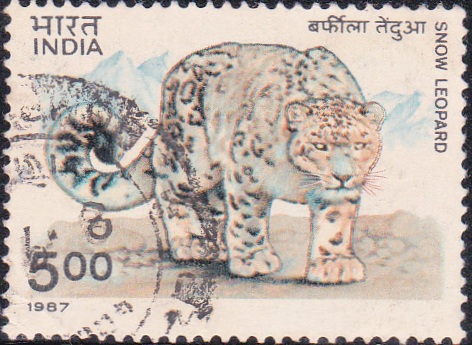
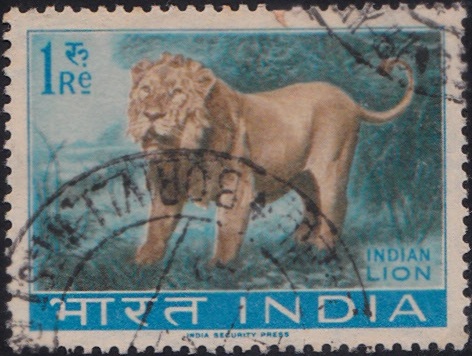



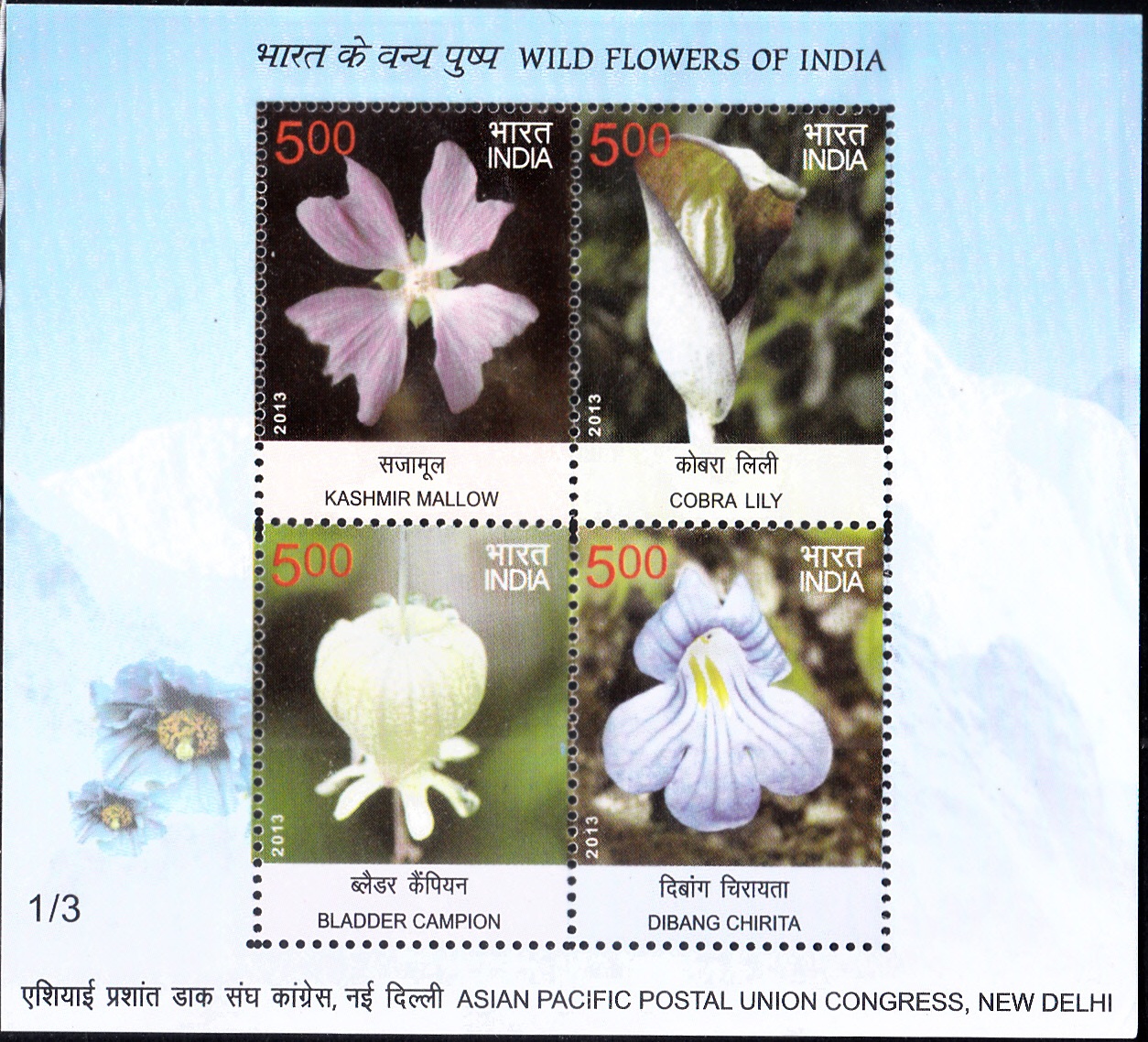
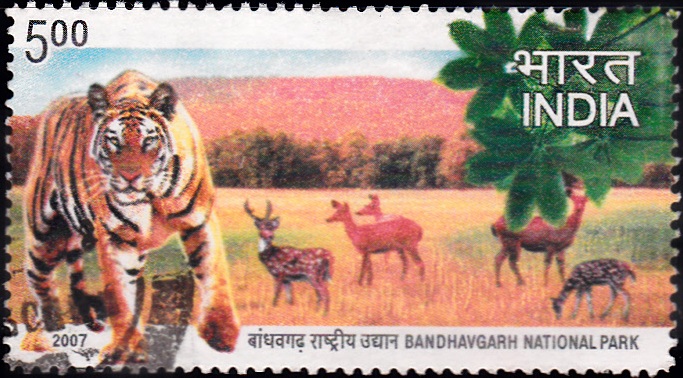
[…] natural predators in the forest. They are the Himalayan brown bear, the Himalayan black bear, the snow leopard and the leopard. Such predation is the natural law of the jungle which does not materially affect […]
[…] ‘White’ tigers sometimes occur, especially in the old princely state of Rewa, and these are usually partial albinos – a freak of nature. No black tiger has ever been reliably recorded, though black leopards are fairly frequently met with in south and northeast India. […]
[…] brings one into the high altitude habitat (3,500 m and above) of animals such as Blue Sheep, Snow Leopard, Himalayan Brown Bear, Himalayan Tahr and Musk Deer. Best sightings can be made in autumn […]
[…] Royal Navy Air Station in Brawdy under the Command of Lt Cdr BR Acharya, sporting on its crest the White Tiger of […]